Last updated on October 23rd, 2023 at 08:35 pm
A few years ago, I absolutely needed to find a new sunny spot to grow more tomato plants. The only border that was left free was a bed whose soil had never been worked: it was impossible to dig a spade into it because the soil was so stony. Moreover, the soil is clayey, very dry and hardens quickly in summer.
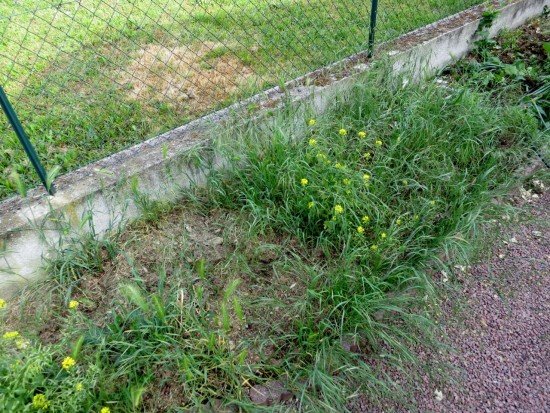
As you can see, we are far from the ideal soil that any gardener can dream of! A loose soil in which tools would sink easily! A black soil that would be rich in fertile humus! A deep soil, always a little humid in summer, in which the roots of the tomato plants would develop wonderfully!
No, my flower bed was really the opposite of all that!!!
But as I had heard about some pioneers (Pierre Rabhi, Jean Pain, Pascal Poot among others) who have successfully grown vegetables on dry land, I decided to go for it…
First step: pull out the vegetation in place. It is easier to do after a good rain: the soil will be softer and the roots will come more easily. Don’t throw anything away: these weeds will still be very useful: they will be used to mulch the tomato plants to protect the soil from drying out.

I told you that the spade fork couldn’t penetrate this compact and stony soil, so I had to go to the next level: the pickaxe. It’s amazing how much easier everything gets with this tool! After calculating a generous 80 cm spacing between each tomato plant, I dug a total of 8 planting holes.
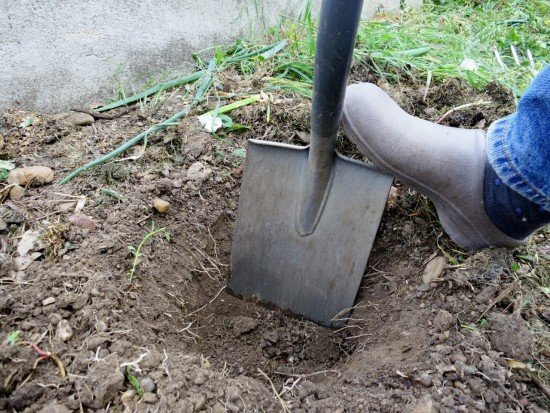
The soil became harder and harder as the pickaxe went deeper, so I could not go beyond 20-25 cm. I used the spade to evacuate the soil loosened by the pickaxe. I placed this soil next to each hole, sorting out the biggest stones as I went (some were the size of my fist).
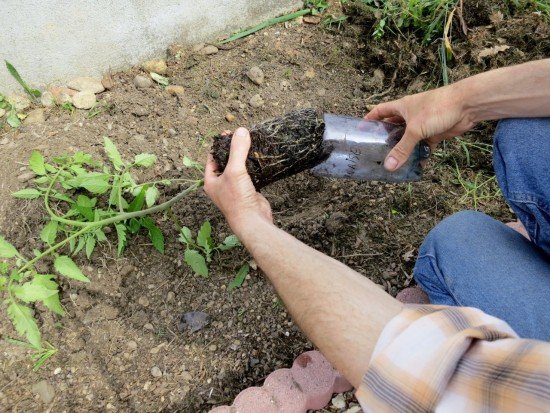
For years I have been sowing my tomatoes in bottles, which has the advantage of strengthening them because they can develop many more roots. Click here to watch a video in which I show the method of sowing in bottles.
To unmould the bottles easily, simply immerse them in a bucket of water for 15 minutes.
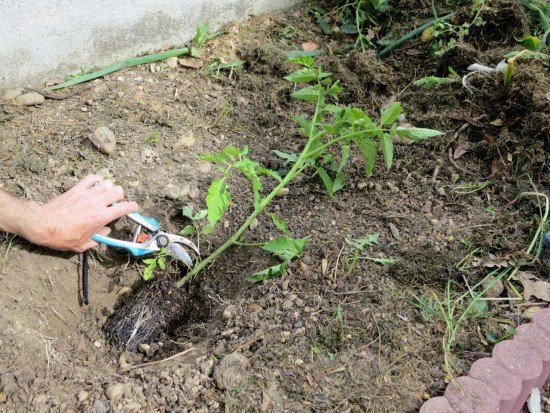
We are in an extreme case where the depth of loose soil is low. This is where slanted planting becomes very important.
The goal is to have robust tomato plants to be able to resist diseases. To do this, you need to encourage root development. And as tomato stems have the interesting property of emitting new roots from any portion of stem that would be buried under the level of the ground, we will take advantage of this and strongly incline the plant which will be almost lying flat.
Don’t worry, the stems will straighten up after a few days because they are attracted by the sun.
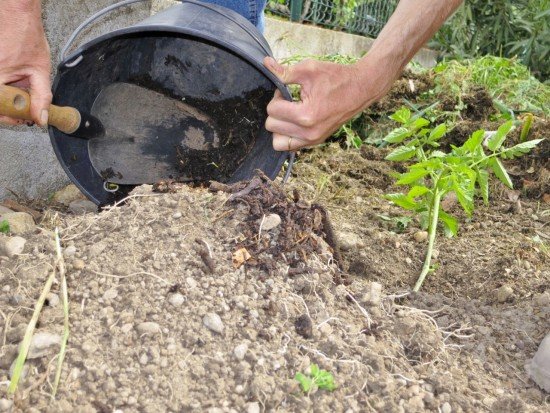
The soil in this bed is partly made of fill, which means that it is very poor. So I added a good shovelful of compost for each hole. The compost is more effective in the upper layers than at the bottom of the hole, so I first filled the hole halfway with the soil I had set aside, then I filled it with a mixture of compost and soil.
To get the root ball in good contact with the soil, to accelerate the incorporation of the compost into the soil and to strengthen the foliage of the tomato plants, I did a copious watering of several liters without waiting.

I needed the mallet to drive in the concrete iron stake (in this kind of soil, spiral stakes are worthless because they are not rigid enough).
The mulch, whose virtues I explained in this article, is put in place right away thanks to the grasses pulled from the plot during the first step. I will add dried grass clippings, to reach a thickness of about 15 cm.
We are a few months later and I can show you the tomatoes I got. Each of the eight plants grew vigorously on several stems and produced many good-sized tomatoes, without any particular diseases.
If you have been following me for a few years on this blog, you know that my favorite variety is ‘Valencia’. I was not disappointed with the production of the two Valencia plants that grew in this bed.
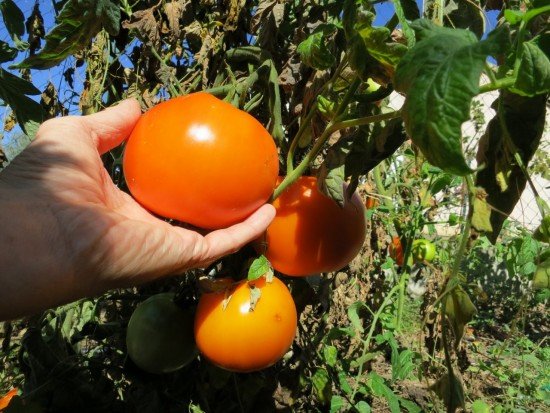
In the years that followed, I took advantage of the work done the first year to replant tomatoes in the same holes. The soil was obviously much easier to work. I just needed to add some compost and voila, my plants are in place for the season!
Later on, I wanted to grow other vegetables in this spot and I transformed this bed into a real growing bed.
To do this, I had to loosen the entire surface with a pickaxe, then put the soil through a sieve to remove all the stones – and there were many.
Now, with the addition of organic matter and permanent mulching, the soil in this plot has become soft and lumpy. So much so that I can use my hands to dig the planting hole for the tomatoes.


